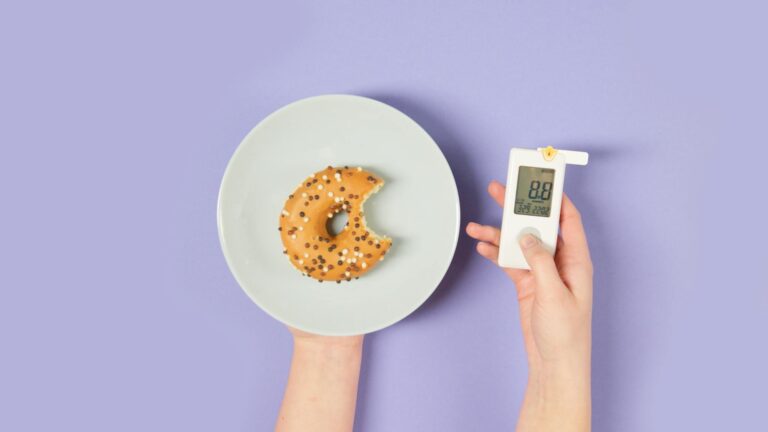Discover why blood pressure readings varies in evening vs morning, what’s normal, and when to measure for better accuracy.
Introduction:
Have you ever noticed how your blood pressure numbers seem to dance throughout the day? I recently discovered that up to 70% of people see significant differences between their morning and evening readings! As someone who’s been monitoring blood pressure for years, I’ve gathered fascinating insights about these daily fluctuations. Let’s dive into why timing matters so much and how you can use this knowledge to your advantage!
The Science Behind Blood Pressure Timing
The Science Behind Blood Pressure Timing is governed by your body’s 24-hour circadian rhythm. Blood pressure typically peaks in the morning (6 AM-12 PM) due to cortisol release, and reaches its lowest point during deep sleep (2-4 AM). This natural “morning surge” increases blood pressure by 10-20 mmHg as your body prepares for daily activities, while during sleep, pressure drops by 10-20% – a process called “nocturnal dipping.” These fluctuations are primarily controlled by hormones like cortisol, aldosterone, and melatonin, making timing crucial for accurate blood pressure readings.
Morning Blood Pressure: What You Need to Know
Morning blood pressure typically surges between 6 AM and noon as your body releases wake-up hormones. For most accurate readings, measure your blood pressure within 1 hour of waking, before taking medications, and after sitting quietly for 5 minutes. Common mistakes include measuring immediately after waking or after morning activities. Risk factors for higher morning spikes include high salt intake, sleep apnea, and uncontrolled hypertension. Always record your readings with time and date for accurate tracking.
Evening Blood Pressure Patterns
Evening blood pressure readings are typically lower than morning measurements due to reduced stress hormones and activity levels. The best time to measure is between 6-9 PM, before taking evening medications but after daily activities have settled. Exercise, large meals, alcohol, and stress can significantly affect evening readings. Normal evening ranges should be below your morning readings by 5-10 points. Record these measurements alongside any relevant activities that might affect the results.
Factors That Affect Time-Based Readings
Several key factors influence blood pressure readings throughout the day. Medications work most effectively when taken at consistent times, typically peaking 4-6 hours after intake. Large meals can temporarily raise blood pressure for 1-2 hours, while exercise causes an immediate spike followed by a beneficial drop. Poor sleep quality can elevate next-day readings by 5-10 points, and stress can cause sudden spikes of 10-20 points. Understanding these factors helps ensure more accurate monitoring.
Creating Your Optimal Measurement Schedule
Create a consistent blood pressure monitoring schedule by measuring twice daily – once in the morning (within an hour of waking) and once in the evening (6-9 PM). Take three consecutive readings each time, waiting 1 minute between each, and use the average. Document all readings in a digital app or logbook, including time, date, and any relevant factors like medication or stress. Adjust your schedule if you work nights or have unusual sleep patterns to maintain consistency with your daily routine.
When Time-Based Variations Signal Problems
Time-based variations in health indicators can signal underlying issues that need immediate attention. Watch for:
– Red flags: Sudden or extreme changes in vital signs, like rapid heart rate, unusual blood pressure swings, or irregular breathing patterns.
– Dangerous fluctuations: Spiking or dropping blood sugar, oxygen saturation, or fever.
– When to contact a doctor: Any persistent or unexplained change in symptoms, even if mild, especially if accompanied by fatigue, dizziness, or pain.
– Emergency situations: Seek urgent care for chest pain, severe headache, sudden numbness, loss of consciousness, or shortness of breath.
– Pattern changes: Noticeable shifts in sleep, appetite, weight, or mood may indicate a problem.
Tools and Apps for Time-Based Monitoring
Here’s a list of recommended tools and apps for time-based health monitoring, including tracking, data-sharing, and interpretation tools:
Best Tracking Apps
MyFitnessPal: Tracks daily activity, food intake, and offers personalized insights for weight management and nutrition.
Apple Health / Google Fit: Comprehensive activity tracking, heart rate monitoring, and integrates with multiple health apps.
Glucose Buddy: Ideal for diabetes management, with blood sugar tracking, insulin dose recording, and reminders.
Digital vs. Manual Records
Digital: Apps like CareClinic and Symple help track symptoms, medication, and progress over time, storing data safely for easy reference.
Manual: For patients preferring non-digital methods, Leuchtturm1917 Health Journal provides organized templates for tracking symptoms and medication manually.
Smart Device Recommendations
Apple Watch / Samsung Galaxy Watch: Tracks heart rate, ECG, and activity seamlessly, integrating with health apps for real-time monitoring.
Withings BPM Connect: A Wi-Fi-enabled blood pressure monitor that syncs data with your phone.
Oura Ring: Monitors sleep, heart rate variability, and activity in a small, comfortable ring form.
Data Sharing with Doctors
FollowMyHealth: Enables patients to share health records directly with healthcare providers.
MyChart by Epic: Allows syncing and sharing lab results, medications, and care plans, helping doctors monitor patient progress remotely.
Result Interpretation Tools
Mayo Clinic Symptom Checker: Offers symptom analysis and guidelines on potential health issues.
Ada Health: An AI-driven tool that provides insight into symptoms and when to seek medical advice.
These tools support active health tracking, data sharing, and personalized care, making them great for managing time-based health variations.
Conclusion:
Understanding your blood pressure patterns throughout the day empowers you to take better control of your health monitoring routine. Start by tracking your readings at consistent times and watch for your personal patterns to emerge. Remember, knowledge is power when it comes to managing your blood pressure effectively!





